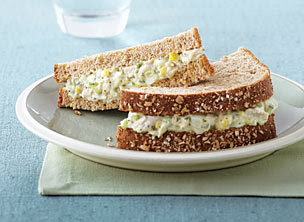By Larry Hohter (Larry Hohter, The Times’s bureau chief in Rio de Janeiro from 1999 until August 2007, is on leave, writing a book about Brazil.)
The New York Times - Published: February 24, 2008
.
IN Portuguese, “amado” means “beloved,” and in more than a score of novels, the Brazilian writer Jorge Amado made clear his eternal passion for Salvador da Bahia, the city that took him in as a teenage boarding student and became his home. Salvador, in turn, loved him back, and even now, more than six years after his death, Amado’s exuberant spirit, aesthetic and characters seem to permeate the streets of the place he described both as “the most mysterious and beautiful of the world’s cities” and “the most languid of women.”
.
For visitors keen to experience those tropical mysteries, Amado went so far as to suggest an itinerary in his novel, “Tereza Batista: Home From the Wars.” He wanted tourists to see not just “our beaches, our churches embroidered with gold, the blue Portuguese ceramic tiles, the Baroque, the picturesque popular festivals and the fetishist ceremonies,” but also “the putridity of the slum houses on stilts and the whorehouses.”
That kind of dichotomy was typical of Amado, who, especially in his early years, tended to see everything as pairs of opposites: good and evil, black and white, sacred and profane, rich and poor. He even managed to impose that Manichean vision on the geography of Salvador, scorning Rua Chile, then the main commercial street of the upper city, and its well-to-do clientele in favor of the lower city and the port, where sailors, longshoremen, beggars, prostitutes and grifters saturated him in “the greasy black mystery of the city of Salvador da Bahia.”
Nowadays, the heart of the lower city has been restored and gentrified. The beach where the homeless street urchins of his 1937 novel, “Captains of the Sands,” struggled to survive has disappeared, replaced by a yacht club and a small mall that includes art galleries and a restaurant, Trapiche de Adelaide, that not only may be Salvador’s finest but also offers a magnificent view of the bay.
But at the noisy, stifling Mercado Municipal just down the road, the flavor of the old days lingers. Inside, stalls sell not just T-shirts but also herbs, magic potions, aphrodisiacs and amulets. On the plaza out front, con artists perform card tricks, folk poets known as repentistas and cordelistas recite or sing their verses, and practitioners of capoeira perform their graceful mixture of dance and martial arts to the twang of the single metal string of the gourd-like berimbau.
The link between the scruffy lower city and the imposing “black mass on the green mountain above the sea,” as Amado referred to the upper city in “Pastors of the Night,” is the 191-foot Lacerda Elevator, which was itself featured in “Sea of Death,” published in 1936. At its upper terminus, the elevator opens onto a square that provides a sweeping view of the city and the bay.
But at its lower terminus, the elevator is surrounded by funky bars that play axé, pagode and other styles of music favored by the Brazilian working class. Every time I exit, I think of “The Two Deaths of Quincas Wateryell” and its description of a bar “full of glum clusters of young guys, joyful sailors, women down on their luck and truck drivers with long hauls scheduled.”
As much as its people, Salvador’s streets and landmarks are characters in Amado’s novels. Salvador overwhelmed the author with its sights, sounds and smells. “In Bahia, popular culture enters through the eyes, the ears, the mouth (so rich, colorful and tasty the culinary arts) and penetrates all the senses,” he wrote in “Bay of All Saints,” a guidebook first published in 1945 that is unfortunately out of print.
Amado’s own presence is perhaps most palpably felt at the museum on Pelourinho Square that bears his name. Inside are numerous photographs of the novelist, at work and with his family, at home in Salvador and abroad, where he lived in reluctant exile for some years. The permanent exhibition also displays first-edition covers, in Portuguese and in translation into more than 40 languages, of each of his novels.
As you sit on the museum steps, the most famous scene from Amado’s best-known novel, “Dona Flor and Her Two Husbands,” also made into a movie in the 1970s, comes readily to mind. Even with the cobblestoned plaza cluttered by touts trying to sell trinkets to sunburned tourists in Bermuda shorts, the image of Flor walking with Teodoro on one side and the naked ghost of Vadinho on the other seems an indelible part of the landscape.
Just across the square, at Largo do Pelourinho 68, is the boardinghouse where Amado lived when he first came to Salvador from the provincial town of Ilhéus in 1928 at the age of 16 to study. Not coincidentally, an early novel written in Socialist Realist style, “Sweat,” is set in the building, which today is painted pastel green and has a small plaque that acknowledges its importance in Amado’s intellectual formation.
Legend says that Salvador has 365 churches, one for each day of the year, and each meant to be more spectacular than the last. The most dazzling of the lot is probably São Francisco, a frothy Baroque confection a couple of blocks from Pelourinho that is awash in gold arabesques and is connected to a monastery whose walls are decorated with gorgeous 18th-century Portuguese tiles.
.
But Amado always felt a special affection for the more austere Igreja Nossa Senhora do Rosário dos Pretos because of its links to the historic suffering of the blacks who make up the majority of the city’s population. The church is at the foot of Pelourinho Square, where in colonial days slaves were flogged, and Amado, sometimes unjustly accused by his critics of favoring exoticism and sentimentality over substance, never forgot that.
.
“The church was all blue in the late afternoon, the church of the slaves in the square where the whipping post and pillories had been erected,” he wrote in “Tent of Miracles,” published in 1969. “Is that the reflection of the sun or a smear of blood on the cobblestones? So much blood has run over these stones, so many cries of pain rose to heaven, so many supplications and curses resonated on the walls of that blue church.”
Food was also essential to Amado’s world, as the title of “Gabriela, Clove and Cinnamon” clearly conveys. Amado’s humble heroines are frequently of the belief that the surest way to a man’s heart is through his stomach, and more often than not they are proven right. “If after confronting all the dangers and obstacles that life offers, you don’t eat well, then what’s the point?” one character observes in “The Violent Land.”
Walking down the slanted sidewalk of Pelourinho Square last year, I caught the unmistakable fragrance of dende, or palm oil, and peanut sauce wafting from a doorway. It turned out to be the entrance to the Museu da Gastronomia Bahiana, which opened in 2006 and offers a solid introduction to the culinary delights of Amado’s novels. Just downstairs from a restaurant operated by Senac, a government training school for hotel workers, waiters and chefs, the museum is divided into three sections. The first displays the ingredients of typical Bahian dishes, along with the utensils required to make them and photographs of the final results, while the second is a store that sells cookbooks, sweets and compotes.
The third, of course, is the restaurant itself, which is not just a tribute to the cuisine that inspired Amado but also an invitation to gluttony. For 28 reals ($15.56 at 1.8 reals to the dollar), visitors can eat as much as they want of the 40 or so dishes displayed on long serving tables. The choices range from vatapá, a savory paste made from shrimp, coconut milk, palm oil and nuts, to quindim, an intensely yellow custard that combines egg yolks, sugar and ground coconut. Drinks are served by women wearing the turbans and flouncy dresses of Candomblé priestesses. .
Like Pedro Archanjo, the hero of his novel “Tent of Miracles,” Amado was a lapsed Communist and atheist who eventually became so involved in Candomblé, the African-derived religion that is Brazil's equivalent to voodoo, that he became an obá, or honorary high priest in the cult of Xangô, the deity of lightning and justice. Candomblé beliefs and practices pervade Amado’s novels and motivate many of his characters, especially in “The War of the Saints,” the last of his great novels, published in 1988.
“In this land of Bahia, saints and enchanted beings perform miracles and sorcery,” Amado wrote, “and not even Marxist ethnologists are surprised to see a carving from a Catholic altar turn into a bewitching mulatto woman at the hour of dusk.”
The terreiros, or open-air Candomblé sanctuaries, which Amado frequented back when they were illegal and subject to police raids, now flourish and are open to visitors. Some hotels organize trips to what they advertise as Candomblé ceremonies. But these tend either to be bogus or at the very least watered down.
A better option is to make arrangements with one of the established terreiros to attend a worship service and, since most of the tabernacles are in poor, outlying neighborhoods, hire a taxi. Amado was fond of both the Casa Branca group in the Vasco da Gama neighborhood and Ilê Axé Opô Afonjá, in the Cabula area, which the Brazilian government designated a national treasure in 2001.
Both are good choices for visitors. Ilê Axé Opô Afonjá was “my house,” Amado wrote, where “I have my chair at the side of the high priestess and at times am her spokesman.” He also urged visitors to be sure to ask their own orixá, or divinity, for protection just as soon as they arrived in Salvador.
“The pathways of Salvador are guarded by Exu, one of the most important orixás in the liturgy of Candomblé,” he wrote in “Bay of All Saints.” But Exu is often confused with the devil, so “woe be unto those who disembark with malevolent intentions, with a heart of hatred or envy, or stop here tinged by violence or acrimony.”
.
For most of the last decades of his life, Amado lived at Rua Alagoinhas 33, in the Rio Vermelho neighborhood, far from both the lower and upper city. At one point in “Dona Flor,” a character complains that “the worst address can only be Rio Vermelho, with its isolation and impostors, an end-of-the-world, almost suburban kind of place, and so ordinary.”
.
But in fact the area is charming, and the street on which Amado lived is quiet and palm shaded. The house itself is decorated with blue and white tiles with images of birds and fruit, and has a white tower with a statue and Candomblé emblem honoring Xangô. After Amado’s death on Aug. 6, 2001, his ashes were scattered in the house’s garden.
“The years of freedom I spent on the streets of Salvador da Bahia, mixing with the people of the docks, of the markets and fairs” and other somewhat disreputable and picaresque locations were “my best university,” Amado said when he was inducted into the Brazilian Academy of Letters in 1961. Or as one of the characters in “Captains of the Sands” muses, “there is nothing better in the world than to walk like this, at random, through the streets of Bahia.”
.
.
Once a week, TAM Airlines, the Brazilian carrier, operates a direct flight between Miami and Salvador da Bahia. The plane leaves on Sunday morning and arrives 7 hours and 45 minutes later; a round-trip ticket costs about $1,300. During the rest of the week, though, visitors must fly overnight to Rio de Janeiro or São Paulo and make connections there, adding both time and cost to the trip.
.
The Hotel Tropical (Avenida 7 de Setembro 1537; 55-71-2105-2000; http://www.tropicalhotel.com.br/) is conveniently located near both the downtown area in the upper city and the main in-town beaches, and is decorated with murals by Carybé, who illustrated many of Jorge Amado’s novels. There are 253 rooms, and a double, with breakfast and taxes included, is 239 reals ($132.78 at 1.8 reals to the dollar).
Of the many hotels on the beachfront, the Othon Palace (at Avenida Oceânica 2294 in Ondina; 55-71-2103-7100; http://www.othon.com.br/) is a personal favorite. It’s within walking distance of several landmarks and fine restaurants, is only a short cab ride away from the lower city, and has 278 rooms with rustic-style furniture and verandahs, most offering spectacular views of the sea and a nearby lighthouse. Double rooms start at about 200 reals.
If you’re willing to splurge, the Convento do Carmo (Rua do Carmo 1; 55-71-3327-8400; http://www.pousadas.pt/) is definitely the place to go. The main building, recently and luxuriously restored, dates from 1586 and is walking distance from Pelourinho. There is a splendid restaurant and a museum, large courtyard and gardens, and the rooms are decorated in an elegant colonial style. But expect to pay a high price: double rooms start at 680 reals.
.
In what was once a dockside warehouse, Trapiche de Adelaide (Avenida do Contorno 2 in the lower city; 55-71-3326-2211) offers a beautiful view of the bay and has food to match. The menu emphasizes local ingredients prepared with French delicacy: a typical meal might start with a soup of cassava and lobster, progress to a main course of shrimp in mustard sauce garnished with almonds, pineapple and apricots and conclude with tropical fruits or ice cream made from the same. Lunch or dinner for two, with a caipirinha, a cocktail made from sugar cane liquor, is about 200 reals.
At the Mercado Modelo, two restaurants outdoors on the second-story verandah are good places to have lunch while enjoying the view. Camafeu de Oxóssi (55-71-3242-9751) and Maria de São Pedro (55-71-3242-5262) are bitter rivals, but have essentially the same menu and prices, featuring regional dishes such as xin xin, a chicken and shrimp stew, and bobó de camarão , a shrimp dish. Lunch for two with a caipirinha, is about 60 reals.
Varal da Dadá (Rua Teixeira Mendes 55, Alto das Pombas in Federação; 55-71-3332-1777) is exactly the kind of informal neighborhood place that Jorge Amado frequented, with the added lure of spectacular regional cuisine. Dadá is the nickname of a local cook famous for her moquecas, or fish stews, bobó de camarão and sweet desserts, and the restaurant that bears her name operates in the backyard of her home, Tuesday through Sunday. Lunch or dinner for two with beer or a caipirinha runs about 75 reals.
.
Capoeira is a mixture of martial arts and dance developed by slaves brought from Africa, and is extremely musical. There are academies that teach the art form and put on shows for the public, such as the Fundação Mestre Bimba (Rua Gregorio de Mattos 51 in Pelourinho; 55-71-3322-5082), and on Friday nights capoeira is also performed at the Terreiro de Jesus, near Pelourinho.
.
VOCABULARY:
.
Boarding Student: Students enroll in a school that provides with meals and lodging
Aesthetic: Showing good taste: artistic, tasteful, tasty
Permeate: pervade, penetrate, interpenetrate, diffuse, imbue
Keen: incisive, sharp
Embroidered: decorated
Putridity: Decomposed and foul-smelling; rotten
Slum: A heavily populated urban area characterized by substandard housing and squalor
Stilts: Any of various tall posts or pillars used as support, as for a dock or building
Slum houses on stilts: (Juntas significando Palafitas)
Whorehouses: A house of prostitution
Dichotomy: duality
Longshoremen: One who is employed in the loading or unloading of ships (estivadores)
Beggars: An impoverished person; a pauper (pedintes)
Grifters: Money made dishonestly, as in a swindle
Nowadays: At the present; these days: now, today
Gentrified: renovate so as to make it conform to middle-class aspirations
Homeless: Having no home
Urchins: poor and often mischievous city child
Struggled: To make a strenuous effort; strive
Stifling: Very hot or stuffy almost to the point of being suffocating
Lingers: moves slowly
Stalls: A booth, cubicle, or stand used by a vendor, as at a market
Twang: To emit a sharp, vibrating sound, as the string of a musical instrument does when it is plucked
Scruffy: Shabby; untidy
Sweeping: Overwhelming; complete
Glum: gloomy, long-faced
Long Hauls: Long distance
Overwhelmed: overpower, sweep over, whelm, overcome, overtake
Sights: That which is or can be seen: lookout, outlook, panorama, perspective, prospect, scene, view, vista
Cobblestoned: a naturally rounded stone larger than a pebble and smaller than a boulder; especially : such a stone used in paving a street or in construction
Cluttered: Excessively filled with detail: busy, crowded, fussy
Trinkets: A small ornament, such as a piece of jewelry
Indelible: Unable to be forgotten; memorable
Boardinghouse: A house where paying guests are provided with meals and lodging
Dazzling: shinning brilliantly, arousing admiration by an impressive display
Flogged: To beat severely with a whip or rod
Whipping post: A wooden framework on a post, with holes for the head and hands, in which offenders were formerly locked to be exposed to public scorn as punishment
Pillories: a wooden instrument of punishment on a post with holes for the neck and hands; offenders were locked in and so exposed to public scorn
Smear: To spread or daub with a sticky, greasy, or dirty substance
Cinnamon: Canela (easier explained in Portuguese)
Humble: Having or expressing feelings of humility: lowly, meek, modest
Slanted: Angled at a slant: beveled, bias, biased, diagonal, oblique, slanting
Wafting: To cause to go gently and smoothly through the air or over water
Gluttony: Excess in eating or drinking
Yolks: the yellow spherical part of an egg that is surrounded by the albumen (gema do ovo)
Ground coconut: Coco Ralado (easier explained in Portuguese)
Deity: entidade (easier explained in Portuguese)
Sorcery: The use of supernatural powers to influence or predict events: conjuration, magic, sortilege, thaumaturgy, theurgy, witchcraft, witchery, witching, wizardry
Bewitching: Having power to bewitch or fascinate; enchanting; captivating; charming (nexte context mais para feiticeiras)
Dusk: The darker stage of twilight, especially in the evening
Police Raids: Batidas Policiais (easier explained in Portuguese)
Flourish: To grow rapidly
Bogus: Counterfeit or fake; not genuine
Outlying: Relatively distant or remote from a center or middle
Pathways: Caminhos (easier explained in Portuguese)
Tinged: dyed in color
Acrimony: Bitter, sharp animosity, especially as exhibited in speech or behavior
Palm shaded: sombreada por palmeiras (easier explained in Portuguese)
Ashes: cinzas (neste context as cinzas do corpo de Jorge Amado – provenientes da cremação)
Scattered: occurring or distributed over widely spaced and irregular intervals in time or space
Splurge: To indulge in an extravagant expense or luxury
Courtyard: An open space surrounded by walls or buildings, adjoining or within a building such as a large house or housing complex















